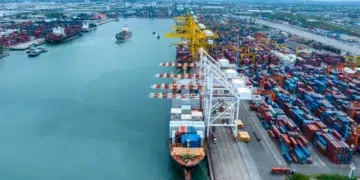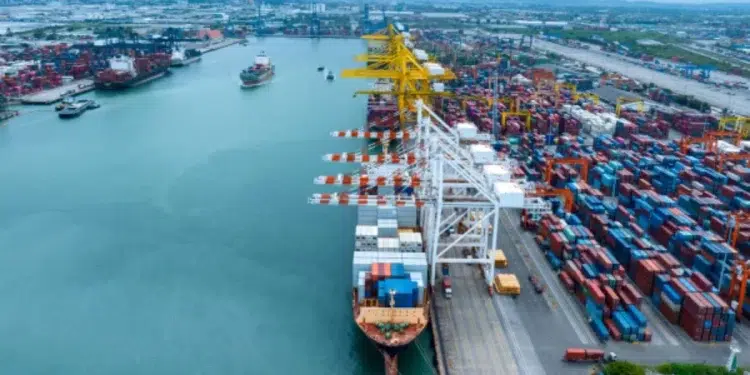By Maria Kalamatas — August 22, 2025
BHUBANESWAR, India — August 22, 2025. On the eastern coast of India, cranes at Paradip Port have barely stopped moving this summer. Between April and July alone, the port handled more than 50 million tonnes of cargo — a record start to the fiscal year. But while the numbers matter, the real story lies in how the port plans to grow: not just bigger, but greener.
Port chairman P.L. Haranadh stood before reporters this week with a message that mixed pride and urgency.
“Handling cargo is one part of our duty,” he said. “The other part is making sure we are ready for a world that demands sustainability. That is why our vision goes beyond tonnage.”
From volume to vision
Paradip has signed agreements worth more than ₹50,800 crore (around $6 billion), much of it directed toward clean energy projects and automation upgrades. The port authority has pledged to reach 100% mechanisation by 2030, phasing out older manual systems in favor of smart, AI-driven traffic and crane operations.
A centerpiece of the plan is the development of a green hydrogen and ammonia terminal — the first of its kind on India’s east coast. Officials say the facility will give exporters and shipping lines access to alternative fuels at scale, aligning with the country’s target of reaching net zero by 2050.
The environmental pressure
Ports across Asia have been under growing scrutiny as shipping’s carbon footprint comes into sharper focus. With container lines testing green ammonia and methanol vessels, terminal operators are being pushed to provide the necessary infrastructure. Paradip’s strategy is to move early rather than wait for regulations to force change.
“Indian ports have long chased volume,” explained Sushmita Rao, an energy and logistics researcher at Delhi Policy Group. “Paradip is signaling that credibility in the future won’t come from how much you move, but how you move it.”
Jobs and local impact
While the scale of investment is global, much of the work will be felt locally. Thousands of new jobs are expected during construction phases, from building new berths to installing renewable energy systems. For Odisha, one of India’s fastest-developing states, the port’s modernization could ripple into manufacturing, exports, and regional trade competitiveness.
Looking forward
Paradip’s record cargo year proves it can handle volume. Its green masterplan aims to prove it can handle responsibility. By tying growth to sustainability, the port hopes to stand out not just in India, but in the global conversation about the future of shipping.
For Haranadh, the challenge is simple but daunting: “We want to grow without leaving scars behind. If Paradip can achieve that, it will set the standard for ports everywhere.”























